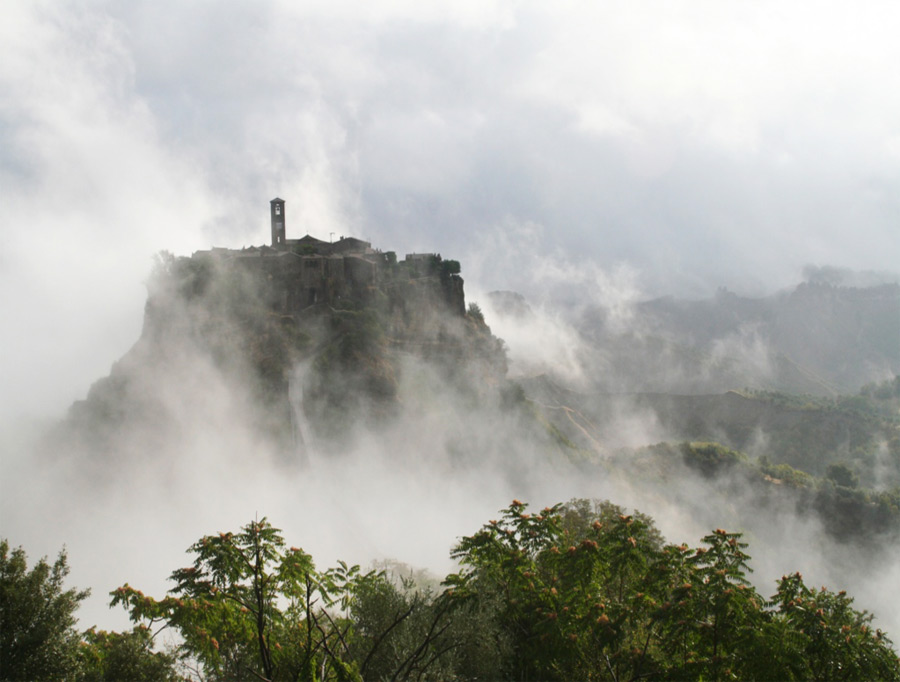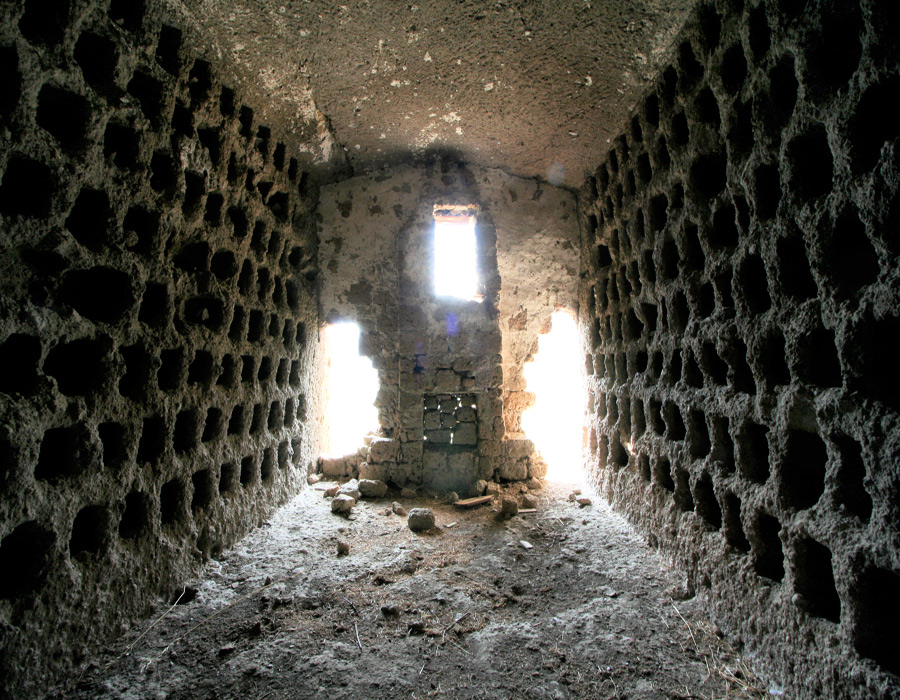Civita di Bagnoregio, Umbria, Italy
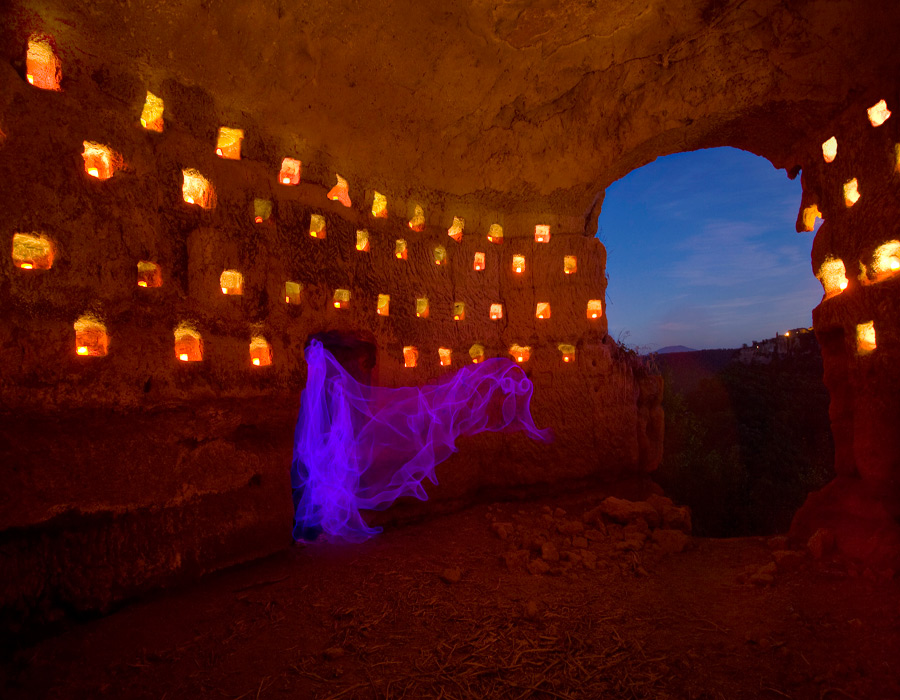
In a remote Italian hilltown, I participated in a NIAUSI residency exploring and documenting the series of caves, cisterns, carved cellars and grottos in this pre-post Eutruscain village. Known as il paese che muore (the dying city), Civita is an interesting ghost town almost frozen in time, acting as a defacto hilltown reliquary. A series of temporary installations and subsequent photographs were created from these caves- many containing “colombari” or dovecotes. In the Middle Ages, these colombari: dove nesting condos were developed to provide protein in the form of eggs and meat at all times, but especially when the towns were cut off due to a siege. Hundreds of these small nesting holes were carefully carved into the tufa to create homes for these birds. Located half way up a cliff face, allowed the birds to have a protected home with ample ventilation and flying access far away from terrestrial predators.
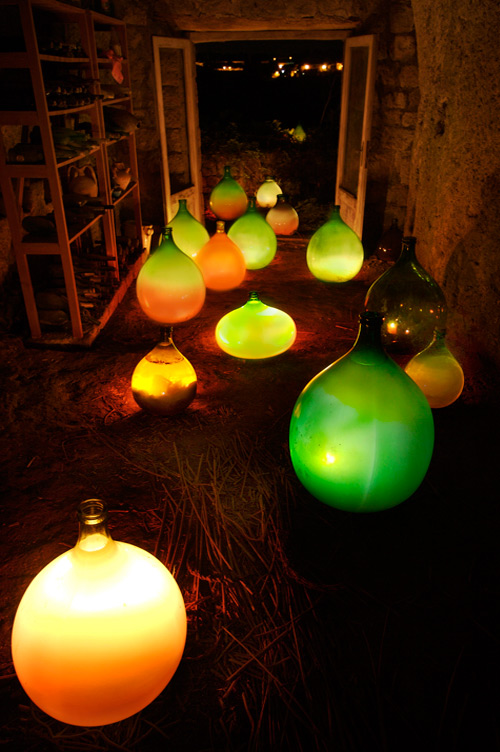
At left is a temporary installation utilizing fluid-filled, illuminated dimigiani (wine and olive oil containers) in the ancient cellar of Astra Zarina and Tony Hayward. This collection of ancient buildings and foundations was the Bishop's complex built on top of pre-eutruscian foundations and sub-terranian spaces now reconfigured into a home and center of NIAUSI. This cellar opens up mid cliffside to the beautiful views of the valley and adjacent hilltown.
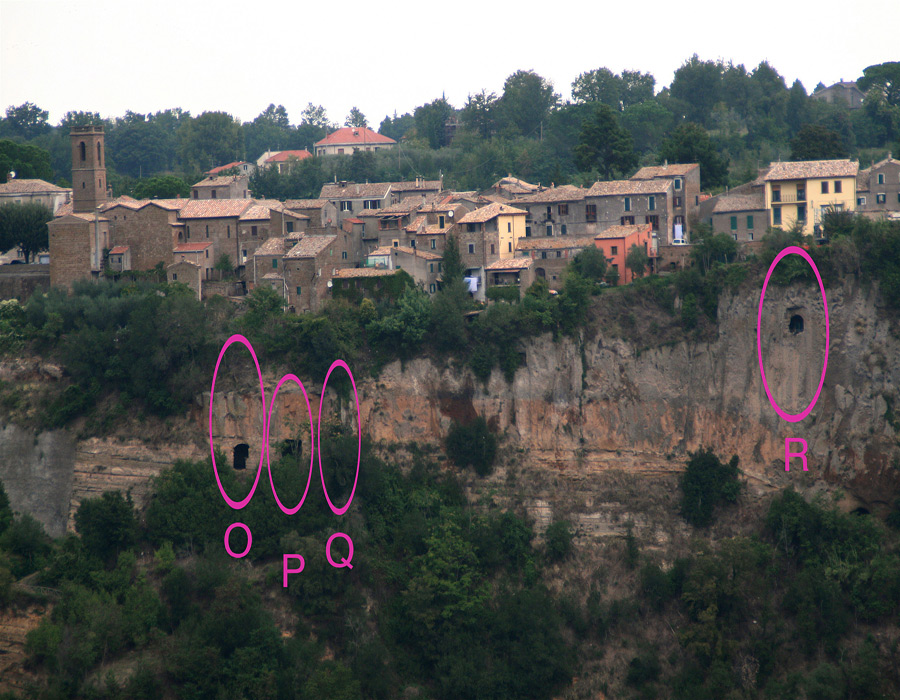
Using a telescopic lens on my camera, I photographed the sides of the cliff and with the print in hand was able to climb up the cliffs to locate these ancient abandoned caves.

Etruscan cellar 3 stories under the tuffa. Timelapse experimentation with electroluminescent cable and funerary candles.
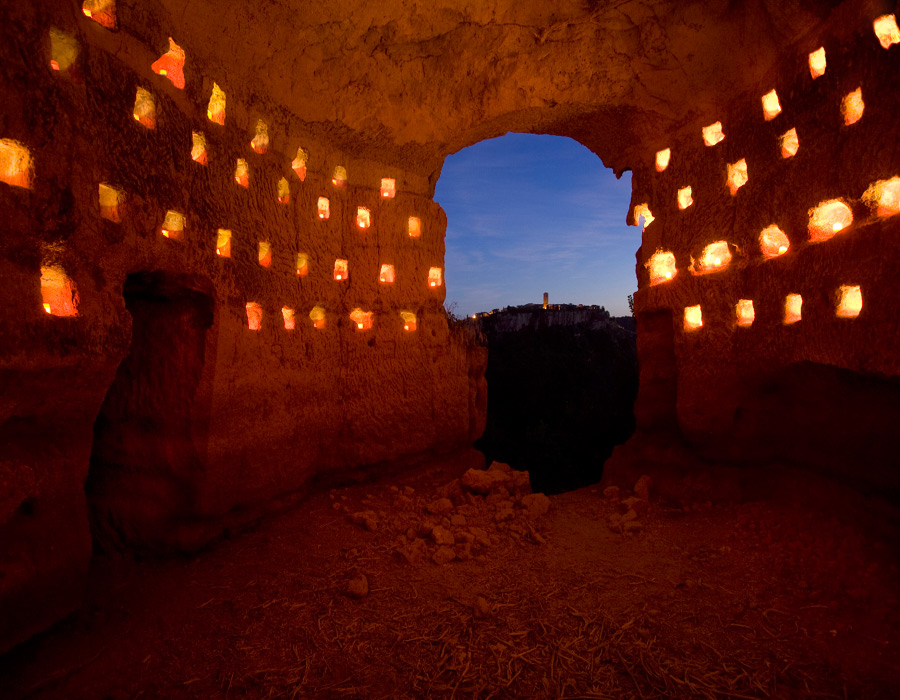
Luminaria installation just preceding the "Day of the Dead" celebrations. The candles were recycled and donated to the local cemetery for reuse. The main tower in Civita can be seen in the distance. Special thanks to Miriam Larson, NIAUSI (The Northwest Institute for Architecture and Urban Studies in Italy ), Tony Heywood & Astra Zarina
